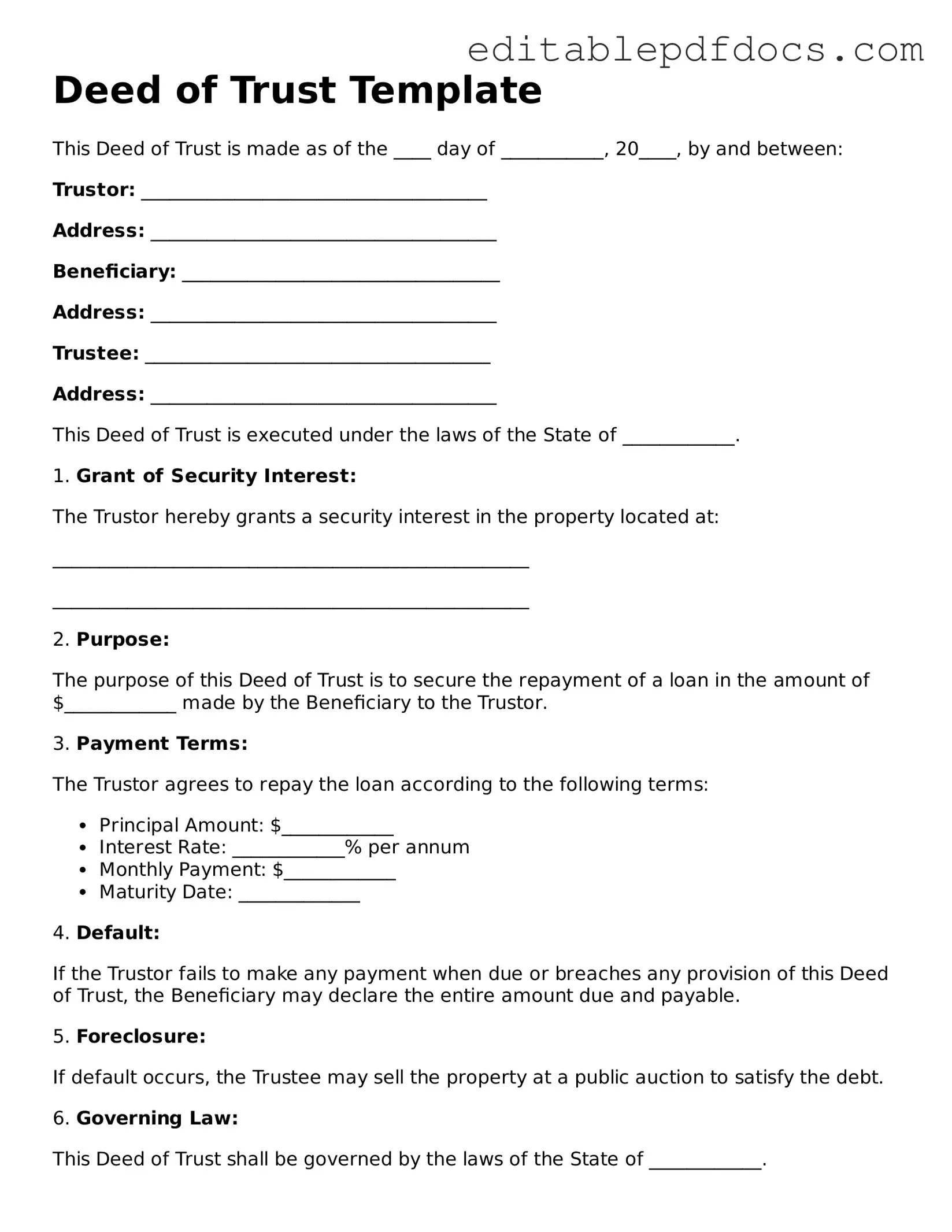A Deed of Trust is an essential legal document in real estate transactions, particularly when financing a property purchase. This form serves as a security instrument that outlines the relationship between the borrower, the lender, and a third-party trustee. It plays a crucial role in protecting the lender’s interests while providing the borrower with the necessary funds to acquire a property. Typically, the Deed of Trust includes key components such as the names of the parties involved, a detailed description of the property, the loan amount, and the repayment terms. Additionally, it outlines the rights and responsibilities of each party, including what happens in the event of default. By establishing a clear framework for the loan, the Deed of Trust helps ensure that all parties understand their obligations and the consequences of non-compliance. Understanding this form is vital for anyone involved in real estate transactions, as it not only facilitates the borrowing process but also safeguards the lender's investment.
